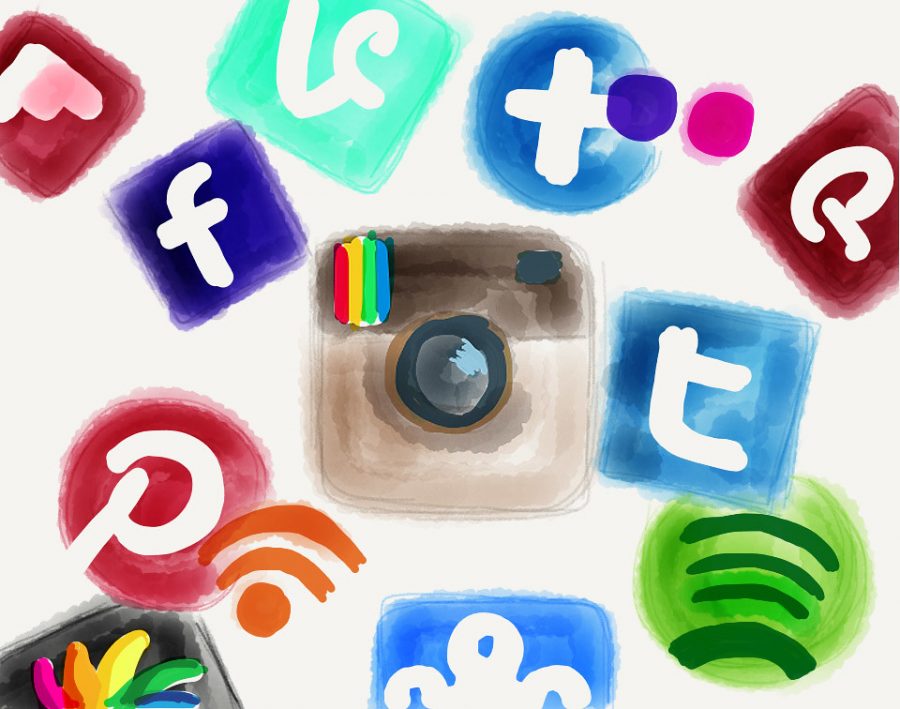Into the World of Social Media
Social media is growing every day. Did you know in just one year, 346 million users joined some sort of social media app?
March 9, 2021
Where would we be without social media? We use it in our everyday lives for interacting, getting the latest news, and just for mere entertainment. According to a study completed by global tech care company ASION Technology, we pick up our phone over 96 times a day, with 74% of those pickups going straight to social media.
Teenagers especially use social media everyday. A Pew Research Center survey from 2018 showed that out of 750 teenagers, ranging in ages 13-17, 50% of them were online constantly. But which platform is the favorite? After conducting a poll on my own Instagram with 100 responses, 61% of people said they used Snapchat more than Instagram. Another poll between TikTok and Facebook inevitably proved that more teens use the former rather than the latter. Twitter’s poll was closer, with only 56% of respondents admitting to using Twitter.
We, as a generation, often perceive people who don’t use social media to be out of touch, whereas the older generations consider us to be addicted. Social media comes with many pros, such as increasing interactions, quickly spreading information, and disarming social stigmas. Social media was especially helpful during the 2020 quarantine when we were all trapped inside. Social media apps such as Instagram, Zoom, and Snapchat have made it possible to communicate while in the comfort of your home.
Another huge positive of social media is its ability to do good. The social media field has opened up thousands of jobs around the world. Social media also allows people to reach out for help. Many petitions and GoFundMes are shared on apps like Twitter and Instagram every day.
With many pros also come many cons. The biggest problem people have with social media is its effect on in-person social interaction. As social media grows, in-person interaction decreases. According to Forbes, about 93% of communication is based on nonverbal language. This means that 93% of our conversations lack verbal cues such as smiling, frowning or crossing your arms, and are instead replaced with emojis and other electronic communications.
Another negative is addiction. Social media has a track record of keeping students from doing things, such as chores around the house or school work. With its addicting nature, it’s easy to lose track of time. Other cons to think about are cyberbullying, hacking, and the spread of false information.
No matter how many pros and cons are enumerated, social media will continue to grow. In 2020, over 346 million new users joined a social media platform, with many more expected to join this year.




